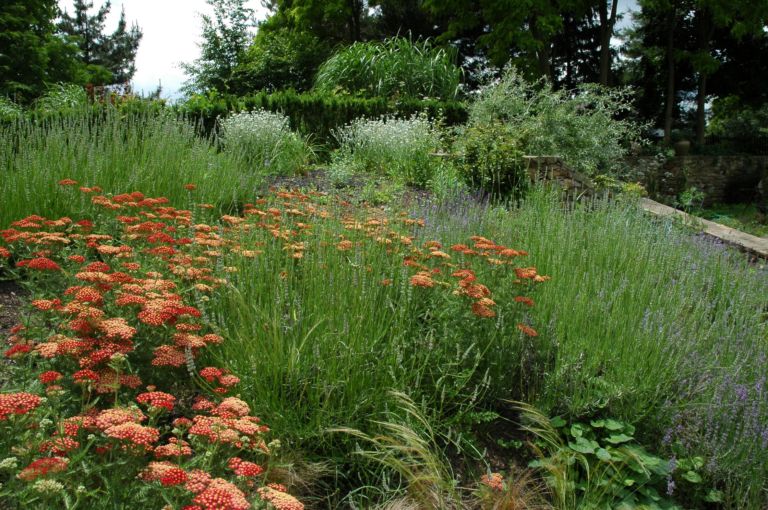So, two friends of mine were over for dinner last week. One friend who has photographed my garden over the years gave the other friend a garden tour while I was tossing the salad and throwing some chicken on the b-b-q.
I saw them standing near my southern sloping hill garden (whose soil has never been improved) which is filled with an array of plant material that needs little to no pampering. When they come indoors, my friend was lamenting the fact that I had lost a slew of lavender that had woven a magnificent tapestry throughout the hill over the past several years. She said “It’s a shame that they died. It looked so beautiful last year.”
 Well, of course she’s correct in one sense. But in all honesty, I must tell you that I wasn’t disappointed, just baffled when I saw by late May that the majority of the lavenders were showing no growth whatsoever. I wondered if the early warm weather followed by the snap of cold weather that we experienced on the East coast had caused their sudden demise. Or was it that my gardening crew cut them back too early in the season (although it was already May when they cut them back and only one third of the way down)? And why were the lavenders on the North side of the house thriving?
Well, of course she’s correct in one sense. But in all honesty, I must tell you that I wasn’t disappointed, just baffled when I saw by late May that the majority of the lavenders were showing no growth whatsoever. I wondered if the early warm weather followed by the snap of cold weather that we experienced on the East coast had caused their sudden demise. Or was it that my gardening crew cut them back too early in the season (although it was already May when they cut them back and only one third of the way down)? And why were the lavenders on the North side of the house thriving?
But rather than being upset or thinking that I would re- plant lavender in the same location (and I do love lavender), I saw this as an opportunity to play with new plant material. There are still dozens of grasses with which I have yet to experiment. And over the years, with the influence of Piet Oudolf’s naturalized planting style, I am more prone to plant in large sweeps of natural, sturdy plant material whose shapes, heights and textures complement each other.
So, did I mourn the loss of the lavender? No, in fact, I didn’t, not one bit! Your see, somewhere along the continuum of my gardening life, I made peace with the fact that specimens will come and go in my garden: that death is just the cycle of nature playing itself out.
And for the sake of full disclosure, prior to the lavender hill garden, 5 Rhus typhina had been strategically positioned on that hill by my gardening buddy, Chris Woods, who thought that they would lend a tropical air to the garden: which they did for more than a few years until a viscious storm came and ripped more than a few major branches off.
So, I’ll keep you posted on how the hill looks as the season progresses. I’m really not terribly concerned though. No matter how the hill evolves, it will give me pleasure and I know that I’ll continue to learn from that steeply inclined area of my garden.
